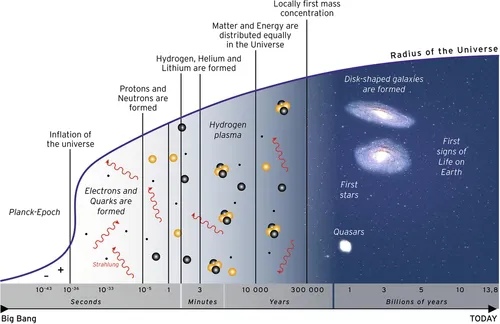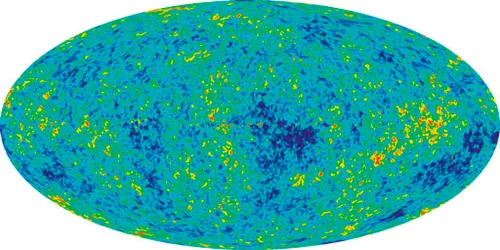
eBook - ePub
Human Physiology in Extreme Environments
Hanns-Christian Gunga
This is a test
Buch teilen
- 336 Seiten
- English
- ePUB (handyfreundlich)
- Über iOS und Android verfügbar
eBook - ePub
Human Physiology in Extreme Environments
Hanns-Christian Gunga
Angaben zum Buch
Buchvorschau
Inhaltsverzeichnis
Quellenangaben
Über dieses Buch
Human Physiology in Extreme Environments is the one publication that offers how human biology and physiology is affected by extreme environments while highlighting technological innovations that allow us to adapt and regulate environments. Covering a broad range of extreme environments, including high altitude, underwater, tropical climates, and desert and arctic climates as well as space travel, this book will include case studies for practical application. Graduate students, medical students and researchers will find Human Physiology in Extreme Environments an interesting, informative and useful resource for human physiology, environmental physiology and medical studies.
- Presents human physiological challenges in Extreme Environments combined in one single resource
- Provides an excellent source of information regarding paleontological and anthropological aspects
- Offers practical medical and scientific use of current concepts
Häufig gestellte Fragen
Wie kann ich mein Abo kündigen?
Gehe einfach zum Kontobereich in den Einstellungen und klicke auf „Abo kündigen“ – ganz einfach. Nachdem du gekündigt hast, bleibt deine Mitgliedschaft für den verbleibenden Abozeitraum, den du bereits bezahlt hast, aktiv. Mehr Informationen hier.
(Wie) Kann ich Bücher herunterladen?
Derzeit stehen all unsere auf Mobilgeräte reagierenden ePub-Bücher zum Download über die App zur Verfügung. Die meisten unserer PDFs stehen ebenfalls zum Download bereit; wir arbeiten daran, auch die übrigen PDFs zum Download anzubieten, bei denen dies aktuell noch nicht möglich ist. Weitere Informationen hier.
Welcher Unterschied besteht bei den Preisen zwischen den Aboplänen?
Mit beiden Aboplänen erhältst du vollen Zugang zur Bibliothek und allen Funktionen von Perlego. Die einzigen Unterschiede bestehen im Preis und dem Abozeitraum: Mit dem Jahresabo sparst du auf 12 Monate gerechnet im Vergleich zum Monatsabo rund 30 %.
Was ist Perlego?
Wir sind ein Online-Abodienst für Lehrbücher, bei dem du für weniger als den Preis eines einzelnen Buches pro Monat Zugang zu einer ganzen Online-Bibliothek erhältst. Mit über 1 Million Büchern zu über 1.000 verschiedenen Themen haben wir bestimmt alles, was du brauchst! Weitere Informationen hier.
Unterstützt Perlego Text-zu-Sprache?
Achte auf das Symbol zum Vorlesen in deinem nächsten Buch, um zu sehen, ob du es dir auch anhören kannst. Bei diesem Tool wird dir Text laut vorgelesen, wobei der Text beim Vorlesen auch grafisch hervorgehoben wird. Du kannst das Vorlesen jederzeit anhalten, beschleunigen und verlangsamen. Weitere Informationen hier.
Ist Human Physiology in Extreme Environments als Online-PDF/ePub verfügbar?
Ja, du hast Zugang zu Human Physiology in Extreme Environments von Hanns-Christian Gunga im PDF- und/oder ePub-Format sowie zu anderen beliebten Büchern aus Biowissenschaften & Umweltwissenschaft. Aus unserem Katalog stehen dir über 1 Million Bücher zur Verfügung.
Information
Thema
BiowissenschaftenThema
UmweltwissenschaftChapter 1
Introduction
Hanns-Christian Gunga Professor, Center for Space Medicine and Extreme Environments, Institute of Physiology, CharitéCrossOver (CCO), Charité University Medicine Berlin, Berlin, Germany
Abstract
This chapter discusses the evolution of the universe, the galaxies, and the Earth. It describes the origin and distribution of chemical elements in the universe, as well as the physical and chemical components that seem to be important for the evolution of life on Earth. Finally, the chapter considers the origins of primates and humans.
Keywords
Universe
Chemical evolution
Life on Earth
Anthropology
Early humans
1.1 Universe
According to latest calculations, the age of the universe is around 13.8 billion years [1]. It probably came into existence by the “Big Bang.” The presence of possible antecedent universes is beyond our knowledge. Immediately after the Big Bang, in the so-called Planck Epoch, the four presently known elemental forces—gravitation, strong and weak nuclear energy, and electromagnetism—began to separate, and an explosive inflation of the universe ensued. Thereafter, electrons, quarks, and radiation developed, and about 10− 5 s after the Big Bang the first protons and neutrons came into existence. In the course of this first second after the Big Bang and the subsequent cooling processes due to the explosive inflation of the universe, known matter originated. Presumably, in addition, matter and energy forms were created that currently still elude our access and exact description (Figure 1.1). The important fact is that this fraction of matter and these energy forms constitute the predominant part in the universe. According to recent calculations, merely 4% of the mass of the universe can be allotted to the matter that we can see and analyze, the so-called “baryonic matter,” which represents the construction material of atoms, 73% being constituted by “dark energy” on the one hand and 23% by “dark matter” on the other hand, leaving unclear what this matter actually consists of [2]. One should be at least aware of this fact when in later chapters the chemical composition of the human body will be discussed in detail. Among these particles of hypothetic matter are the so-called weakly interacting massive particles (WIMPs) [3]. These are heavy, inert particles that hardly interchange with the visible world as we see it. According to recent concepts, even more complex super-WIMP structures are supposed to exist in this exotic world of dark matter possessing its own forms of power and light not perceptible by us. According to the concepts of theoretical physicists and astronomers, these exotic particle forms originated immediately after the Big Bang, only to be partly destroyed 1 ns afterwards by clashes of particles of dark matter. Only after further expansion, and thus cooling of the universe (age of the universe > 10 ns), the amount of WIMPs now calculated theoretically remained in the universe because, due to too low temperature and density, no new WIMPs could be formed in the universe and because the probability of clashes of dark matter among each other gradually decreased drastically [2]. Approximately three minutes after the Big Bang, the first elements, hydrogen and helium, came into existence, and in the following 10,000 years an almost equal distribution of matter and energy in the universe occurred. Until today, the universe has consisted predominantly of these two elements—92.9% hydrogen and 6.9% helium—and the remaining known elements in the universe, the origination of which shall be described in detail later, amount to merely 0.2% of the atoms in the universe (Table 1.1). Due to slight differences in the distribution of the atoms, about 300,000 years later accumulations of matter, and then the first stars appeared. As far as we know right now, the oldest object in the universe to be verified is a quasar aged 13 billion years [5] (Figure 1.1). According to our current state of knowledge, the first galaxies were formed approximately 3-5 billion years after the Big Bang. The unequal distribution of galaxies in the universe, generated by extremely small differences in density in the distribution of matter directly after the Big Bang in the inflationary state of the universe, is still perceptible by the differences in temperature. The temperature differences were recently impressively demonstrated [6] (Figure 1.2). The differences found in the distribution of temperatures are only around < 0.0002 K, but they allow conclusions regarding the mass differences in the early universe and enable a hypothesized “frozen image” of the state of the universe directly after its formation following the Big Bang.

Figure 1.1 Emergence of the universe from the Planck-Epoch 13 billion years ago; its sudden explosive inflation, and the forming of electrons, quarks, protons, neutrons, hydrogen, helium, and mass concentrations that became the first stars and galaxies until today.
Table 1.1
Atoms in the Universe—Percent atom abundance of most abundant atoms in the Universe.
| Atoms | % Abundance | SEM |
| H | 92.969 | 0.0 |
| He | 6.901 | 0.311 |
| O | 0.068 | 0.003 |
| C | 0.040 | 0.002 |
| N | 0.009 | 0.0006 |
| All others | 0.011 | 0.0005 |
| Total | 100.000 |
(Adapted from [4])

Figure 1.2 The Cosmic Microwave Background temperature fluctuations. The image is a Mollweide projection of the temperature variations over the celestial sphere. The average temperature is 2.275 K, and the colors represent the tiny temperature fluctuations. Red regions are warmer and blue regions are colder by about 0.0002°K. (Adapted from http://wmap.gsfc.nasa.gov/media/101080) [7].
1.2 Galaxies
First, there were no galaxies as we know them now as more or less disc-shaped assemblies of stars, but as loose clouds of galaxies. About 11 billion years ago, gravity began to form the first galaxies as we know them today (Figure 1.1). With more and more mass accumulation, especially toward the center of a galaxy, a black hole is created where even light cannot escape. Our own galaxy, the Milky Way, has such a super massive black hole today. This structure is not fixed and cannot be seen alone. Instead, galaxies in themselves form clusters, and these clusters even form bigger super clusters, which again are concentrated into filaments that connect the different super clusters, forming a kind of gigantic web cluster. For a long time an open question had been what keeps galaxies from falling apart, forming instead those clusters and super clusters that keep them together. Today, astronomers are convinced it is the “dark matter,” which, as mentioned above, is matter that exists approximately six times more often in the universe than that baryonic matter that we know. Indirect hints to the existence of matter have come from so-called “gravitational lenses” that deviate light on its way through the universe. However, the dark matter has a probably even stronger counterpart, the “dark energy” in the universe, an unknown force that pulls the galaxies, clusters, and other structures apart from each other. For the existence of the Earth and ourselves, it is crucial to recognize that our solar system is actually placed in a very special part of our own galaxy. We are far enough away from the center of the Milky Way with its black hole and highly radioactive zones—an environment that makes life forms as we know them impossible—and not too far away from the center so that we have a fairly stable place in the outer part of the galaxy, the so-called “habitable zone” of the galaxy, circulating around the center in about 225-250 million years, the cosmic or galactic year [8–10].
Our galaxy, the Milky Way, is a medium-sized spiral galaxy in the galaxy cluster Local Group. It has a diameter of about 100,000 light-years,1 and consists of approximately 200 billion fixed stars like our own sun [11–13]. A fixed star of the size of our sun produces its energy by nuclear fusion processes. At about 5 million Kelvin, four hydrogen atom...